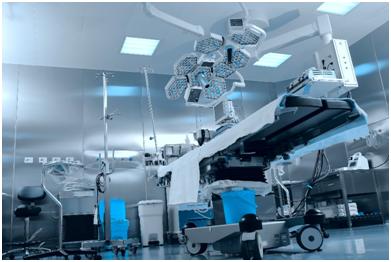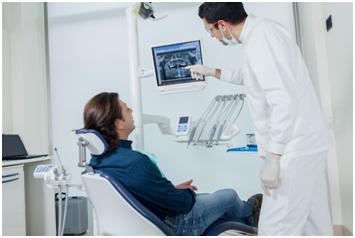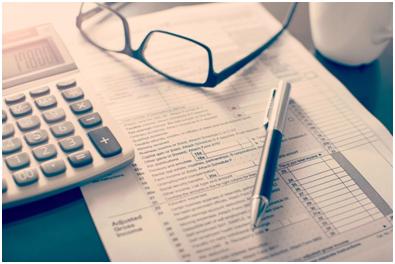|
Section 44 May Reimburse Half of Power Table Cost Power tables provide physicians a convenient way to accommodate patients whose mobility may be limited by age or disability. Tax credits and deductions make purchasing this medical equipment easier for doctors and clinics, as they can allow doctors to recoup about half the cost of purchasing adjustable tables with power features and related equipment.
Section 44 of the tax code provides a generous tax credit for equipment purchased that can improve access for the disabled to a businesss services, including power tables for clinics and doctors offices. Section 44 provides a tax credit that will cover 50 percent of eligible equipment costs, up to $5,000, for businesses to provide improved access to facilities and services for the disabled. The credit covers half the cost of equipment costing between $250 and $10,250. This tax credit is targeted at small businesses, giving them the support they need to afford potentially expensive property and equipment upgrades. Businesses eligible for Section 44 credits include businesses with less than $1 million in gross receipts or with 30 or fewer full-time employees. Many small practices and clinics fall within these eligibility guidelines. Heres an example of how it works. Lets say that Dr. Rick Johnsons practice purchased a power table for $9,750 in 2016. Dr. Johnson could take a $4,750 tax credit as a result of the purchase (the first $250 of the expenditure is not eligible; only the amount between $250 and $10,250 is eligible). Unlike tax deductions, which merely reduce the amount of income subject to taxation, tax credits are applied directly to tax owed. Therefore, the tax credit derived from the above example would reduce any tax owed by the physician by $4,750 and could contribute to a tax refund for the physician.
Section 179 Deductions Tax benefits of purchasing power tables dont end with Section 44 credits, however. Physicians that purchase power tables may also be able to use a Section 179 tax deduction. Section 179 allows businesses to deduct the full cost of equipment that costs $500,000 or less from their income, thus limiting the amount of income that the government can tax. To be eligible for the deduction, a business must spend no more than $2.5 million per year on medical equipment. So, based on the example above, Dr. Johnson would be able to obtain a $4,750 tax credit for his purchase of the power table, and he would also be able to reduce his taxable income by $9,500. Depending on how much other medical equipment Dr. Johnson purchased, he would likely also be able to make further Section 179 deductions on his taxes. In addition to federal tax credits and deductions, states may also offer tax benefits to businesses purchasing medical equipment or enhancing access. For example, California offers a credit similar but far smaller than the federal Section 44 tax credit. Californias disabled access tax credit caps allowable expenditures at $250. While this wont help in the case of a power table, it can help with other expenses the business might incur to improve disabled access.
In todays regulation-heavy business climate, starting a business, particularly a medical practice, can be very expensive. Purchasing equipment for existing businesses can also create a big financial burden for business owners. The tax credit and deduction offered by the federal government help create a powerful financial incentive for health care practices to accommodate the elderly and disabled by purchasing new power table equipment. Greater Demand for Power Tables A growing number of physicians use power tables, as the population of patients who need power tables continues to grow. Consider thisabout 53 million people, or nearly a fifth of the U.S. population, had a disability, according to the Centers for Disease Control. About half of those men and women report that their disability is severe. While not all of those disabilities inhibit mobility, many do, and power tables would help medical professionals better accommodate them. The disabled are not the only people who can benefit from power tables. Older patients are also a growing demographic, and one of particular interest to the medical profession, as they require more health care services, on average, than the general population. In 2014, people age 65 and older numbered 46.2 million, or 14.5 percent of the U.S. population. By 2040, the senior population is expected to account for 21.7 percent of the population. Seniors accounted for about a third of all healthcare spending in the U.S., with spending amounting to more than $18,000 per person for this population in 2010, as opposed to about $6,125 per person for working age individuals Obese patients may also benefit from power exam tables, as their size may make climbing onto a standard examination table difficult. Many power exam tables are sold to accommodate increased weight, particularly bariatric exam tables. About a third of adults are considered too obese, and 6.3 percent are extremely obese and likely to need the assistance offered by a power table.
The bottom line is that a sizeable number of patients are likely to have issues with mobility, with which power tables can help in the examination room, making obtaining these devices worthwhile for healthcare facility owners. The growing demand for improved physical access to care, along with tax incentives offered by the government, is helping to fuel strong sales of power exam tables. How Power Tables Help Power tables benefit healthcare facilities by allowing physicians to more easily examine patients. They also reduce the likelihood of staff being injured by transferring patients between wheelchairs and exam tables. Getting patients onto a proper exam table is important because physicians may not be able to perform an appropriate exam if they are seated or in another position. Lack of accessible equipment may result in improper diagnoses or a diminished standard of care for patients who are older or who have disabilities. Lack of accessible exam tables may also deter patients from seeking needed medical attention, as they may feel embarrassed or feel that they will be uncomfortable during an exam.
Patients who feel they dont have access to acceptable care or who feel like the care they have been receiving is substandard because of their disability may seek redress in court. Even if their suits are unsuccessful, they can eat up a lot of money in attorneys fees and court costs. Healthcare workers who must frequently lift patients onto exam tables are at elevated risk for musculoskeletal injury. The nursing profession has a high percentage of work-related musculoskeletal injuries, many involving sprains to the shoulder or back caused by overexertion in lifting patients. This can result in a number of costs to doctors offices and clinics, including workers comp claims and reduced productivity, as well as costs associated with turnover. Power exam tables can lower to a convenient height for patients who need to transfer from a wheelchair to the table or for patients who are standing to easily sit or lie down on the table. An electric motor can then raise the table to a convenient height for a medical exam, and some tables can be further manipulated to elevate patients into an upright position, as needed.
Why Talking with a Tax Professional Is Important If youre a doctor considering purchasing a power table, talk to your tax professional first. Your tax professional will be able to point out any circumstances that may prohibit you from getting the Section 44 credit or Section 179 deduction. He or she can also help you find ways to get the most from these tax incentives offered by the federal government. Getting the Section 44 credit is relatively easy. All you need do is have your accountant use IRS Form 8826 to claim the credit and provide receipts or sales documents as requested. Tax exemptions like Section 44 and Section 179 change from time to time. For example, just a few years ago, the maximum Section 179 deduction was for $25,000 in equipment. Tax professionals stay abreast of these changes, which is another reason why seeking their advice is important.
Find a Reliable Medical Supply Firm Doctors seeking good deals on reliable medical equipment, including Power Adjustable tables, should reach out to Medical Device Depot. Medical Device Depot is an online warehouse of thousands of brand-name medical supplies and equipment, including power tables. With Medical Device Depots advice, physicians can find the best values on power exam tables that best meet the needs of their patients. |






